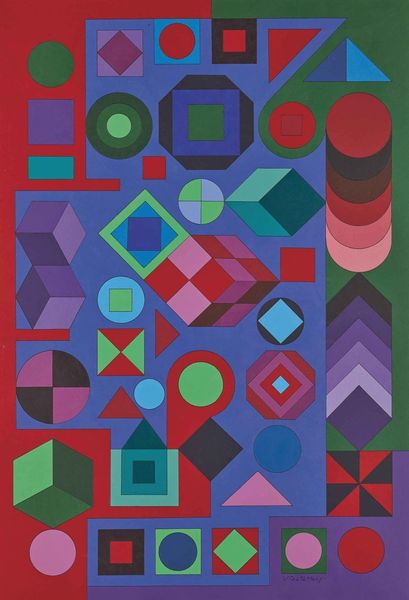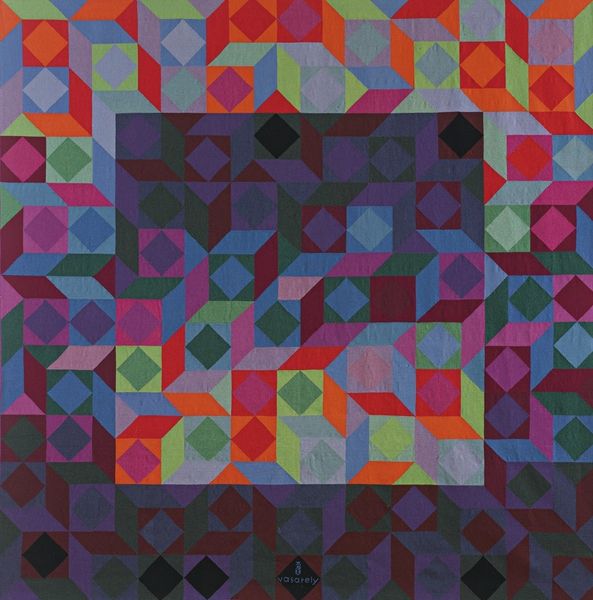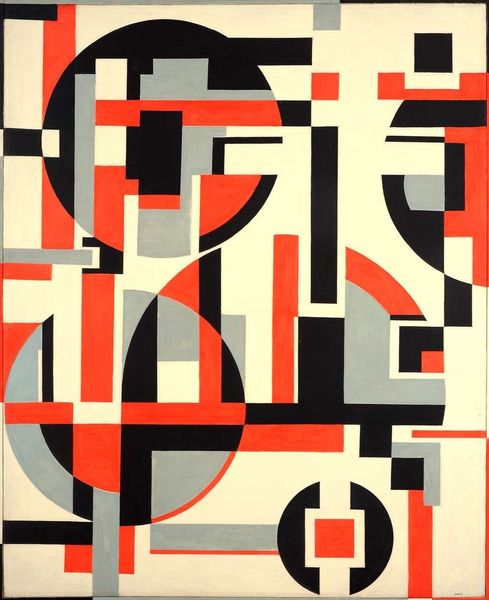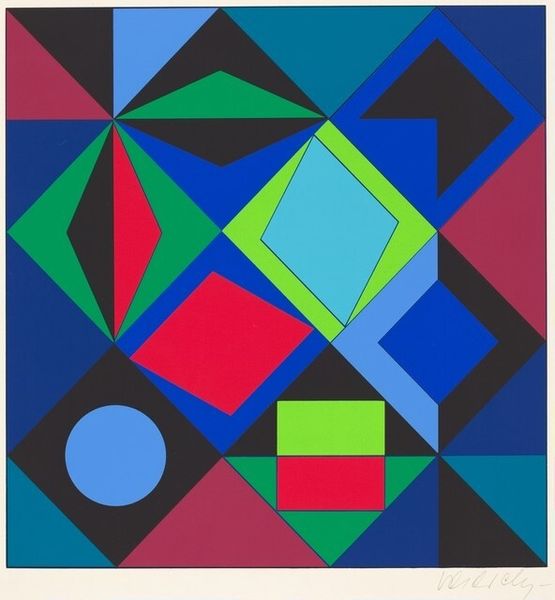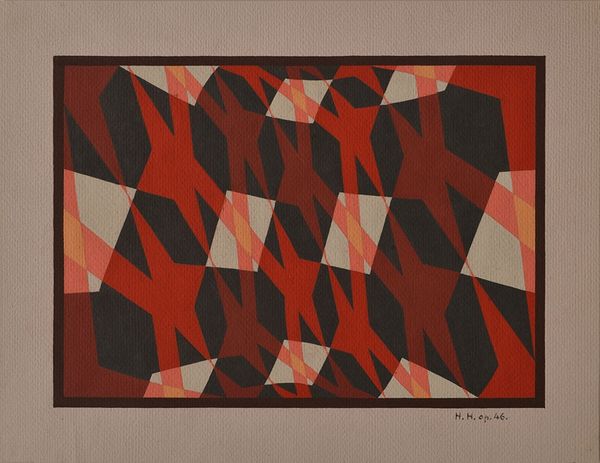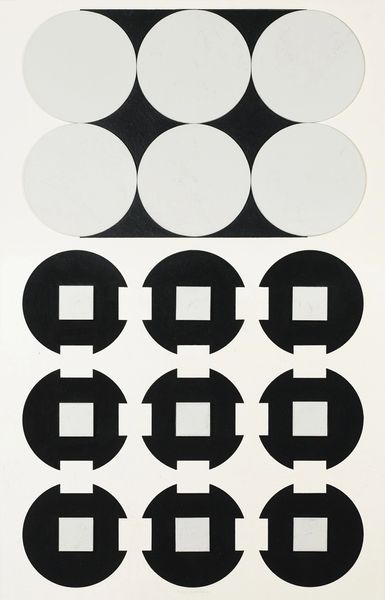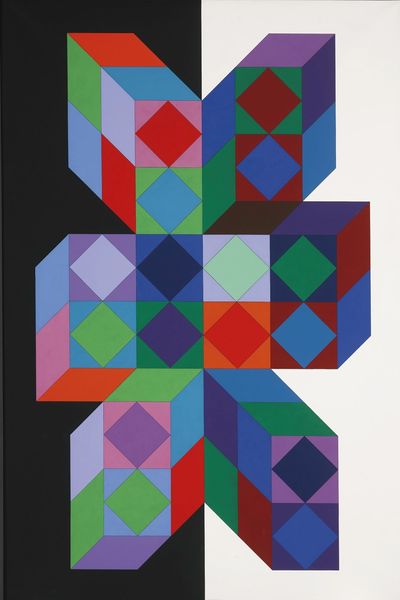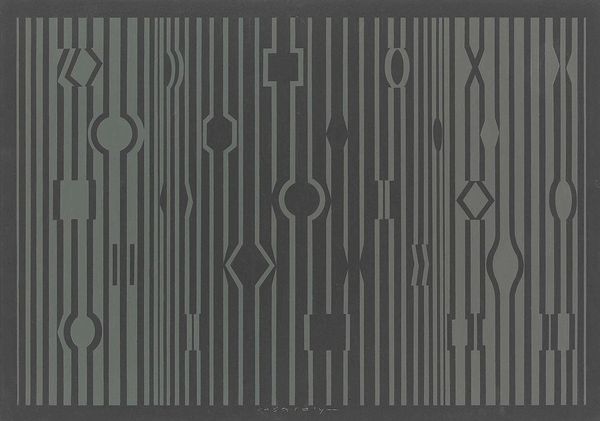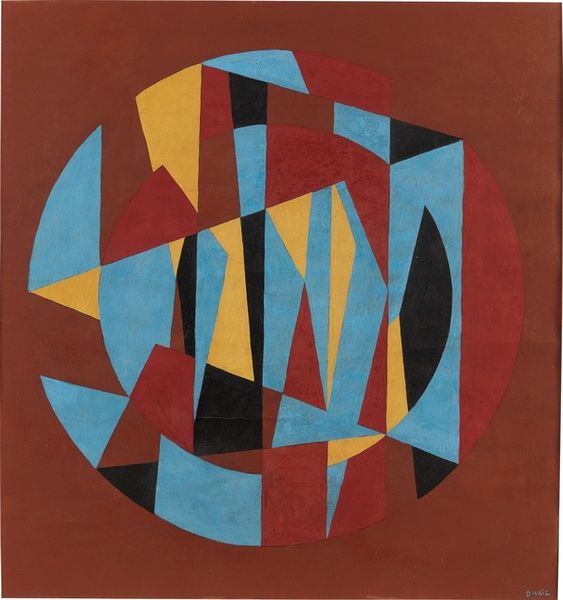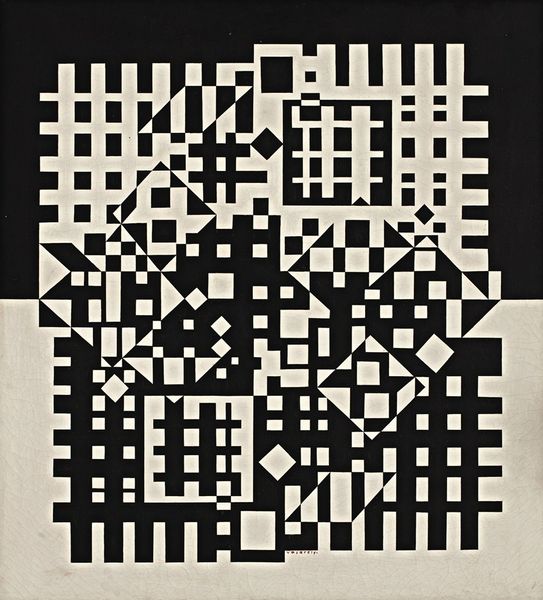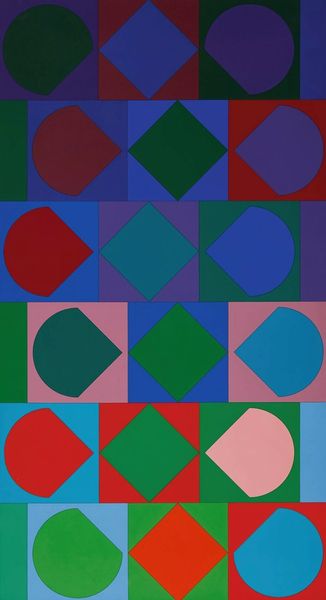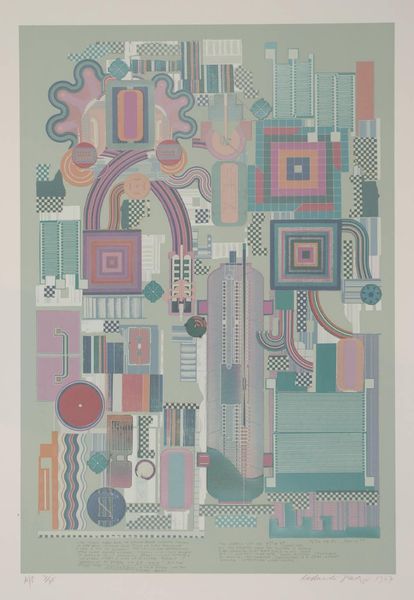
Copyright: Modern Artists: Artvee
Editor: This is “Triass” by Victor Vasarely, from 1984, made with acrylic paint. It’s a mesmerizing collection of geometric shapes, and the red background really makes the composition pop. What stands out to you about this work? Curator: Immediately, I see the symbols operating within systems, hinting at larger cultural narratives. The circles, squares, triangles...these are primal forms, and Vasarely, with his Op Art sensibility, layers them to create a sense of depth and movement. But do these shapes mean something to you personally? Editor: I hadn't thought about them as symbols, more like just shapes creating an optical illusion. Now that you mention it, the squares could represent stability and order, maybe? Curator: Exactly! Consider the historical weight of geometry, think of ancient cosmologies expressed through these forms, Renaissance perspective or even the Bauhaus aesthetics. How does Vasarely, then, by distorting them, echo a cultural memory? The eye is never quite settled. Does that tell you anything? Editor: It’s a bit unsettling, actually! It makes me think of technology and how it both clarifies and obscures our understanding of the world. Like digital information presented visually. Curator: That's an astute observation. Vasarely, while working before our current digital landscape, tapped into something similar – a feeling of being overwhelmed, yet simultaneously drawn in, by the information age that was dawning. He updated those ancient, archetypal images. Editor: So he is drawing from really ancient ideas about geometry, but pointing to the future at the same time? Curator: Precisely! A beautiful tension emerges. It serves to challenge our perception and forces us to confront the symbols that subtly influence our understanding of reality. This work is now so much more thought provoking!
Comments
No comments
Be the first to comment and join the conversation on the ultimate creative platform.
